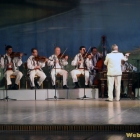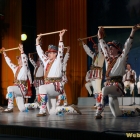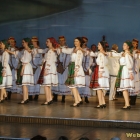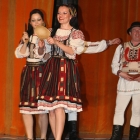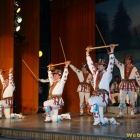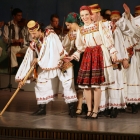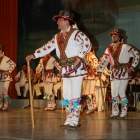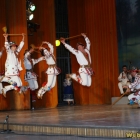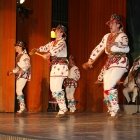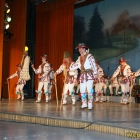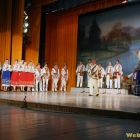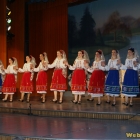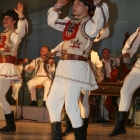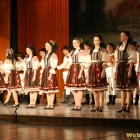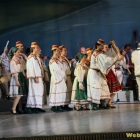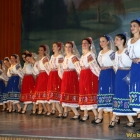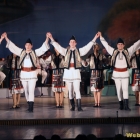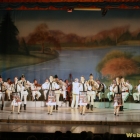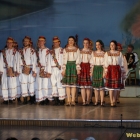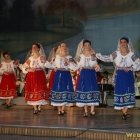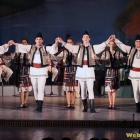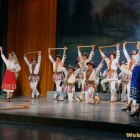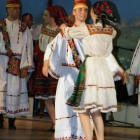Romanian Folk Dances: Călușarii
At origin, this dance was a pre-Christian ritual, which was perfected with time to have more and more spectacular choreographic moves. The name Calusarii is a bit mysterious. It may come from the word horse (cal), from the rhythmic movements and jumps of the dancers and for the little bells that adorn their legs and hats, imitating the sound of a passing carriage. But it may also come from the word gag (calus), from one of the character, the mute, whose mouth might have been covered once. This speaks of the ritualistic nature of this tradition, which had to keep a high degree of secrecy for the outside.
Calusarii is danced in the Southern part of Romania, North the Danube and in some parts of Moldova. It is exclusively a male dance, played by groups of men who gather specifically for this occasion at Whitsuntide (the Pentecost). The young would gather and swear and oath not to reveal the secrets. Two characters lead the ceremony: the master (vataf) and the mute (a negative character, sort of a buffoon, a caricature meant only to maintain the conflict). Probably the ritual was tied to the cult of the Sun, turned into a Christian ritual in which the Holy Ghost comes down upon the believers (The Holiday of the Pentecost).
In popular traditions it is also associated with the iele (mythological women who ran naked corrupting the young, who if caught in their dances lost his mind).
The participants hold sticks with which they make rhythmic sounds, tight white pence and shirts, specific hats, heavy boots, all adorned with colorful stripes of material and little bells. They also used to have a flag with garlic, hazelnut and absinthe. With this flag, the disease of a village old man is taken by one of the dancers, and if will pass only if the dance is performed right.
The Mute is the only character which is not under the command of the Master. He is allowed to interact with the public, usually scare them, or punish the dancers if they don’t exhibit enough energy and involvement.
This demonstration of folkloric dances was offered by Cununa Carpatilor Ensemble (The Crown of the Carpathians), which celebrated 60 years of existence. They presented several other dances for men and women form various folkloric areas of Romania: Maramures, Moldova, Transylvania.
The Crown of the Carpathians Ensemble is a complete one, with orchestra, vocal singers and dancers under the supervision of choreograph Viorel Cioaca. The orchestra is lead by director and clarinet player Gheorghe Popa, who offered a moment of virtuosity himself.
During its existence, Cununa Carpatilor held numerous tours around the world: in United States (1977), China, Cambodia, Vietnam, Laos (1979), Sudan (1982), Denmark (1985), Sweden, Norway (1986), Italy, Germany, Greece, Turkey (1987), Cyprus, France (2000) The Soviet Union (1988), Bulgaria, Hungary (1990), Holland (1992), Greece, Syria (1995), Holland (1997), Poland, Ukraine, Italy (1999), Portugal (2000), France (2001), Greece (2001), China (2002), Spain (2002, 2003, 2004, 2005).
Mai multe despre: Concert, Events, Romania • Calusarii • costumes • Cununa Carpatilor • dance • Maramures • Muntenia • Romania • traditions • Viorel Cioaca- Home Page
start page - Architecture
landmark buildings - Sacred architecture
places of worship - Nature
landscape photography - Concert
performing artists - Christmas
Santa Claus pictures
- Jooble
jobs for photographers - Escape
an out of control blog - Merry Christmas
The best organizer of Christmas parties - Astro photo
Eclipse hunting and astrological photography

